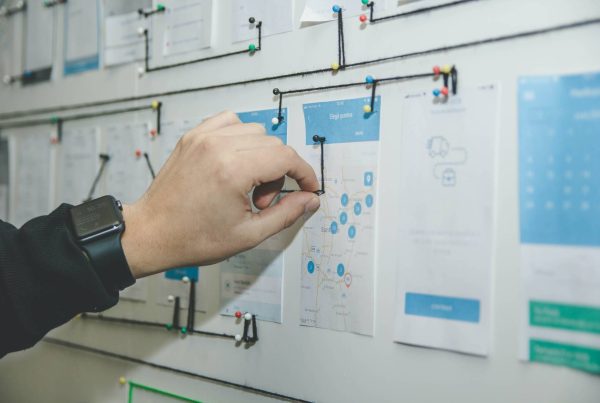Visual communication is the key to selling your ideas and products to your prospective audience. Whether you own a physical or online store or provide any service, effective graphic design techniques will help you make more impact than text-based content.
Since graphics are eye-catching and require a shorter attention span, it’s a highly effective medium to convey much larger messages to your audience.
Do you know that visual content is 40 times more likely to get shared on social media than other types of content? That’s why you cannot ignore the importance of quality graphic designs, whether for print media, social platforms, or business websites.
But how do you produce the best graphics for your business marketing? Whether it’s about picking a suitable colour scheme, using the space smartly, or choosing the best designs. Graphic design techniques encircle all the critical aspects that can help you create engaging designs for your audience.
This post will look at some essential graphic design techniques you should incorporate with your marketing ideas for your upcoming campaigns.
Table of Contents
Simplicity is the Key
Ask any top-quality graphic designer, and they will tell you the importance of a simple design. When marketing your products, it’s essential that the audience can see clutter-free and relevant information in your graphics in just one glimpse.
If your design is too overwhelming and difficult to understand, it won’t leave the desired impact on the audience. Eventually, it won’t be as effective as you wanted.
But what does it mean to keep things simple? A simplistic design refers to the minimalistic use of colours, text, and fonts. There must be a colour balance and enough information to get the message across to the audience. You don’t need to stuff graphics in your design to make it look good. Try to create a balance between aesthetic appeal and delivering your message. That’s how you make a simplistic graphic design.
Picking the Right Color Palette
While there may be a temptation to use full colours, choosing your colour palette wisely is critical. When you use a cohesive colour palette that compliments the images in your graphics, it creates a subtle theme and uniformity in the graphics.
For this purpose, you can use colour theme-picking tools. These tools can pick colours from images and help you set a colour theme for your graphics. It’s a great way to use consistent colours and makes picking colours suited for your graphics easier.
For this purpose, the Adobe Color Website can be a handy tool. It helps you pick the right options by providing you with all the colours in any image.
Visual Hierarchy is Critical
A graphic design can have multiple elements. For instance, if you’re designing an invitation post for a birthday party, there can be several graphic elements and information sections. You need to understand the value of each section and use them according to their position in the visual hierarchy.
For example, the header must be larger than the subheadings, larger than the text box content. Similarly, icons, graphics, and images have a hierarchical position, too, so you need to analyse the critical elements of your graphic design beforehand.
Think about what you’re trying to sell and where you want the viewer to focus. Once you know the focal point of your canvas, you can easily design around it to create the perfect graphic design.
Use Social Media Templates to Save Time
Templates are a great way to save time, and it’s a big help for beginners and graphic designers with little knowledge and experience. While many platforms provide ready-to-use templates for social media posts, you can also design and reuse your own templates.
This is especially useful for monthly marketing campaigns where you might use a similar template for different posts.
Templates make it quicker and easier for graphic designers to churn out more content in less time.
Effective Use of Whitespace
In graphic design terminology, whitespace refers to space on the canvas. Such space doesn’t have any text or graphical elements and provides breathing space for your graphical content.
Some graphic designers make the grave mistake of filling the entire area with elements, images, and graphics. However, it can be overwhelming and doesn’t give a serene look to the overall content.
Using the whitespace effectively takes time to master, but it’s highly effective in ensuring that the result boasts quality.
Understand Your Dimensions
Inexperienced graphic designers often start designing without knowing their graphics’ exact size and space. At the same time, it may not seem significant. But a change in size will prompt a change in the position and orientation of your graphical elements.
For instance, an Instagram post may have a different size and orientation than a LinkedIn post. For these reasons, many clients prefer the best graphic design company Arlington, to evade any problems related to sizing and orientation later.
The problem is even more significant for printable media. Therefore, ensure you know the dimensions in pixels and aspect ratio.
Smart Use of Typography
Font selection is key to a quality design. But this isn’t as easy as it sounds, given that hundreds of fonts exist. So as a designer, you’re always tempted to try one more font before finalising your design.
Moreover, some fonts complement each other, so picking the right font theme is as critical as your colour palette.
Make sure that the fonts go well with each other and are aesthetically pleasing. More importantly, it’s a good idea to stick to existing font combinations. It’s a good idea to work with font families to ensure cohesiveness and uniformity in your design.
Make it More Readable
Your design should be easily readable. It means your graphic elements and text shouldn’t overlap and must be easily distinguished. Otherwise, it can be hard to convey the message through your graphic design.
Use a proper typeface and pick the colour themes that enhance the readability of your design. At all times, make sure that your design is simplistic and visually engaging.
Think About Colour Psychology
Every graphic design has a mood and aura. Make sure that your colour palette compliments your message. This is where colour psychology becomes so critical for your graphic design. Colour psychology dictates what each colour represents in a cultural and emotional sense. Women prefer softer colours like purple and green, while men tend to favour bolder colours like black and red.
For instance, if your design features light colours that are easy on the eye, it reflects lighter and happier emotions. Likewise, bold and dark colours like red and black portray stronger and sometimes negative emotions to the audience.
Therefore, based on the mood of your graphic design, picking the right colours can make a huge difference to the effectiveness of your design.
Conclusion
Intelligent graphic design is all about understanding the impact on the prospective audience. While there are so many design schemes, fonts, unlimited colours, and graphical elements to choose from, it’s essential to pick the right elements that help you deliver the message to the audience. Remember that you are designing to convey a message rather than portraying your efficiency and knowledge of graphic design. Eventually, it will help you develop more quality designs for your clients, you can also outsource graphic design to help expedite the process to ensure the best results.








